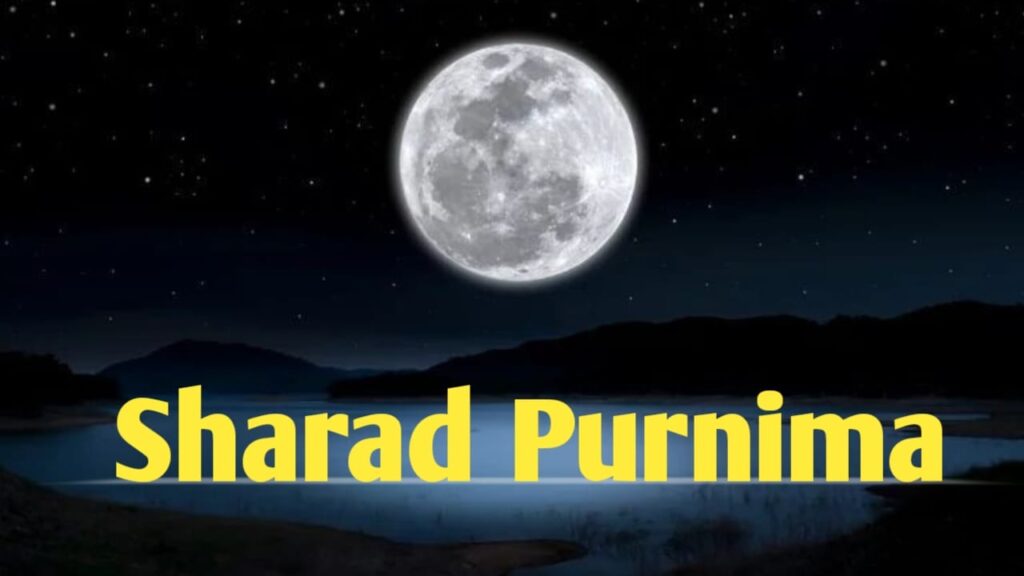Sharad Purnima: A Celestial Celebration

Introduction
Sharad Purnima, also known as Kojagiri Purnima, is a significant Hindu festival celebrated on the full moon day of the lunar month of Ashwin. It holds great cultural and spiritual importance in Hindu tradition. This auspicious day marks the end of the monsoon season and the onset of the harvest season, bringing a sense of joy and festivity.
A Confluence of Celestial Events
Sharad Purnima aligns with a unique celestial phenomenon. It falls on the night when the moon is at its brightest and closest to Earth, illuminating the night sky with its radiant glow. This cosmic event adds a touch of mystique and splendor to the festivities.
Legend and Significance
According to Hindu mythology, it is believed that on this night, the moon showers special blessings, making it the ideal time for prayers and rituals. It is said that the moon is adorned with sixteen kalas (divine attributes), making it especially potent for spiritual endeavors.
The Rituals and Traditions
Observing the Fast (Vrat)
Devotees observe a fast on Sharad Purnima as a gesture of devotion and gratitude towards the moon. The fast is observed from sunrise to moonrise, and it is believed to bestow blessings of health, prosperity, and spiritual growth.
Kheer Offering
One of the most cherished traditions of Sharad Purnima is the preparation of kheer, a creamy rice pudding. This dish is prepared using fresh, unboiled milk and is left in the moonlight to absorb the moon’s energy. It is then consumed as prasad (blessed food) after the moonrise.
Night-Long Vigil
Many devotees stay awake throughout the night, engaging in prayer, bhajans (devotional songs), and meditation. This night-long vigil is considered highly auspicious and is believed to bring immense spiritual benefits.
Donations and Charity
Sharad Purnima encourages acts of charity and kindness. Donating food, clothes, or offering help to the needy is believed to multiply the positive effects of one’s actions manifold.
Scientific and Spiritual Significance
From a scientific perspective, the brightness of the moon on Sharad Purnima is attributed to its position in close proximity to Earth, allowing more sunlight to be reflected back to our planet. This phenomenon is a reminder of the intricate dance of celestial bodies.
Spiritually, the moon is associated with the mind and emotions in Hindu philosophy. Sharad Purnima is an opportunity to cleanse and elevate the mind, allowing for greater spiritual awareness and growth.
Conclusion
Sharad Purnima, with its blend of celestial splendor and profound spirituality, holds a special place in the hearts of devotees. It is a time of gratitude, reflection, and spiritual renewal. Embracing the rituals and traditions associated with this festival can lead to a deeper connection with the cosmos and one’s inner self.
FAQs
Q: How is Sharad Purnima celebrated in different regions of India?
A: Sharad Purnima is celebrated with regional variations. In some regions, special pujas (rituals) are conducted, while in others, cultural performances and processions are organized. The essence of the festival, however, remains the same – expressing gratitude and seeking blessings from the moon.
Q: Can anyone observe the fast on Sharad Purnima?
A: Yes, anyone can observe the fast on Sharad Purnima. It is not limited to a specific age group or gender. The fast is a personal choice and is undertaken by those who wish to partake in the spiritual significance of the day.
Q: Is there a specific time for moonrise on Sharad Purnima?
A: The timing of moonrise varies depending on the location. It is advisable to check with local authorities or religious institutions for the exact time of moonrise in your region to observe the fast and perform the associated rituals accurately.
